About the gardens
Natural beauty in a
natural setting
the coutts centre for western canadian heritage
Heritage Gardens
Over 18 perennial and annual gardens, with meandering walking trails throughout the tall grass meadows and original shelterbelt make up the Coutts Centre gardens. A walkabout can take anywhere from 30 minutes to 5 hours depending on how easily distracted you are! Multiple benches throughout the property are available to take a break and breathe in the fresh air.
Horticultural Binders
Coutts Centre Horticulturalist Kara Matthews highlighted the legacy of Jim Coutts and how his gardens, ideas, and homestead history are maintained, preserved and are thriving. The history is documented in the binders that are carefully protected in the archives of the Coutts Centre. Check out how research and information was collected before the days of google!
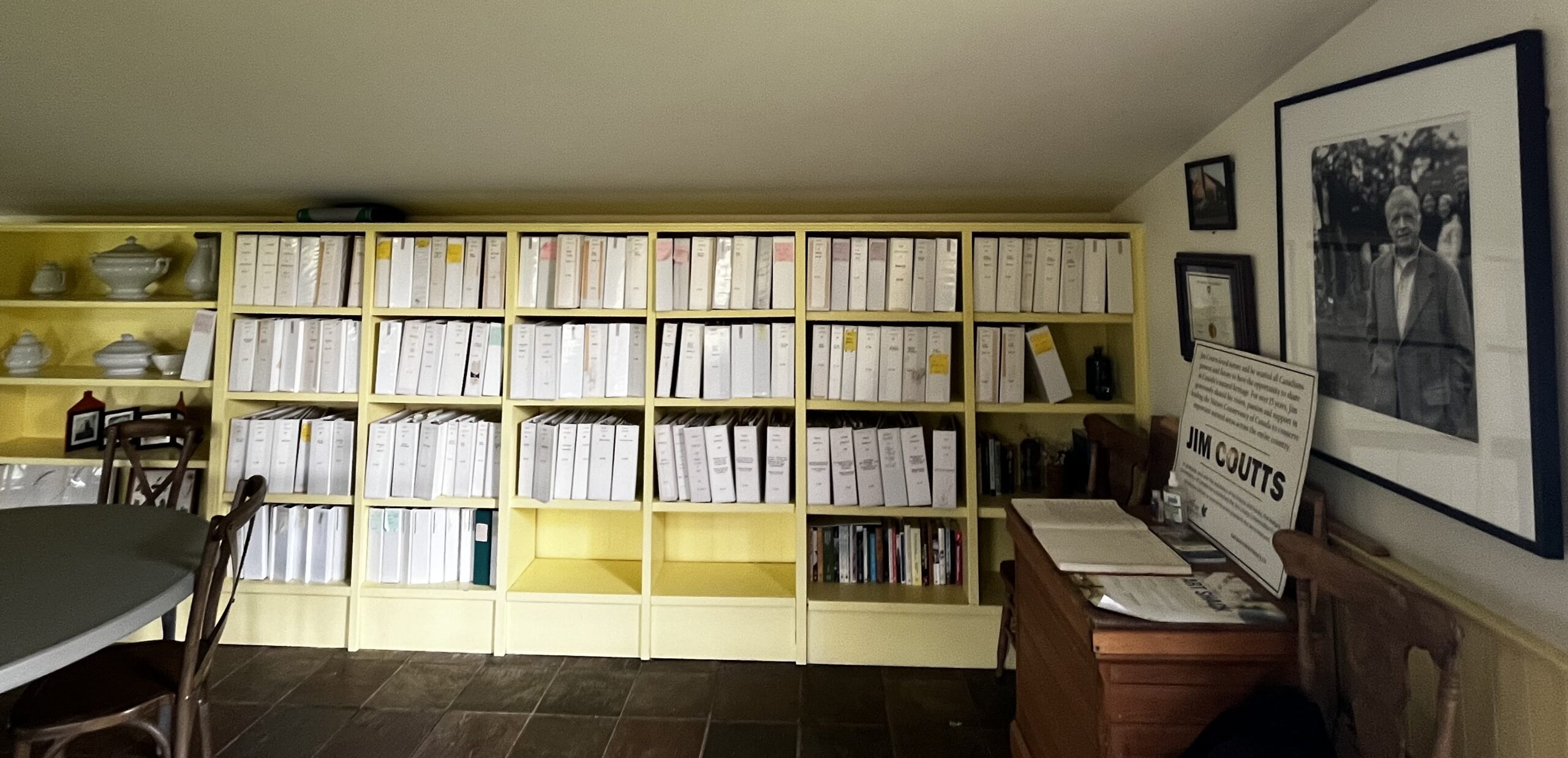
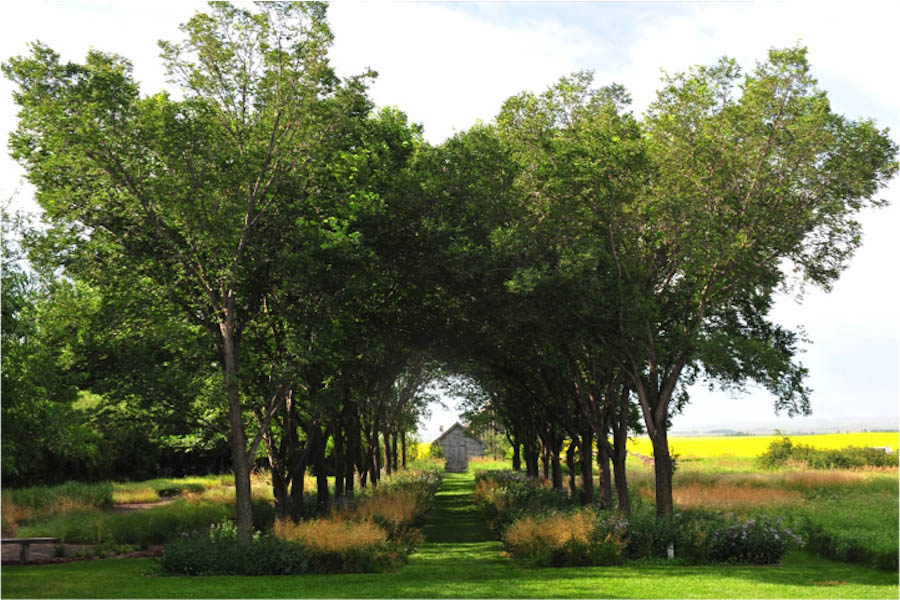
Elm Allée
The Elm Allée stretches from the center of the property near the stage, to the south end where it leads into the Writer’s Cabin. There are 12 American Elms (Ulmus Americana) on each side of the pathway. The entire base of the elms are surrounded by the native smooth aster. Aster laevis. It is a spectacle of solid purple, with a couple bunches of native grasses in the mix. The best time to see the asters blooming is around Late July – Early August.
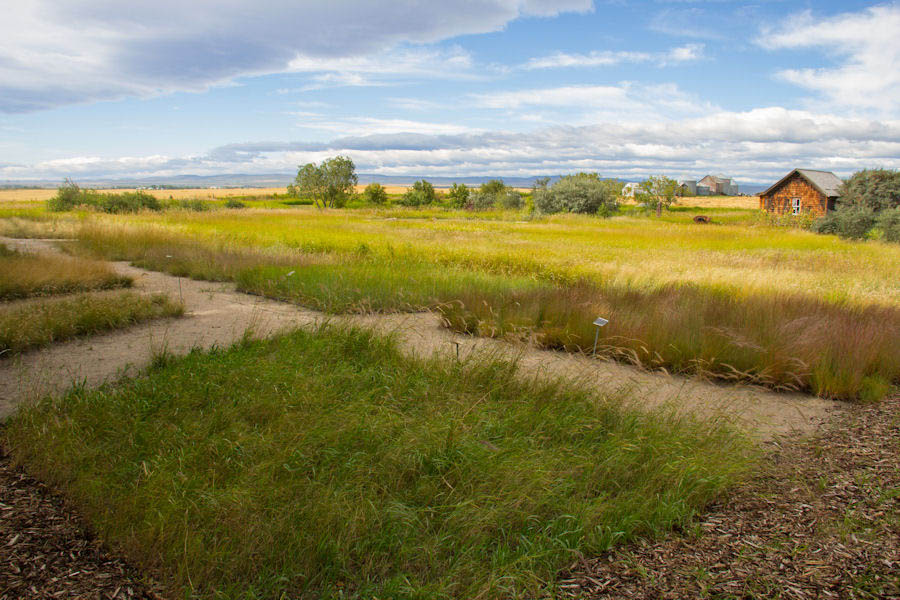
Grass Plots
On each side of the Elm Allée, are 16 plots of native grasses, giving a total of 32 different species that are native to Western Canada. The grass plots provide a wonderful example of the diversity of indigenous prairies. These plots have been designed for educational purposes as well as for progress towards prairie restoration. Each year we harvest the seeds and store them for future use, either within the grassplots themselves or elsewhere on the property. From early spring to very late fall the grassplots are constantly going to seed and changing colors. The most significant grass known for its red fall color is the Little Blue Stem. (Schyzachrium scoparium).
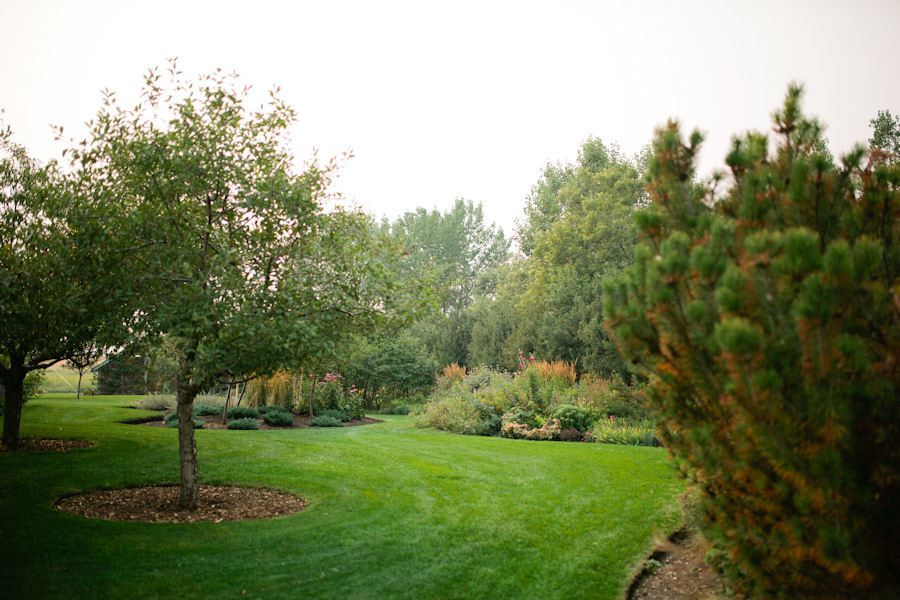
Long Border
The Long Border is a large diverse garden with many ornamental and native plants. The garden runs along the length of the northern shelterbelt and is a spectacle throughout the entire growing season. In the spring the columbine fills the garden with color. In the early summer the lupines begin waking up, followed by the roses and cleome. The lilies, cleome and pin cushion carry us through the mid-summer, and late summer is filled with sea holly, sedum, mums, late blooming roses and the many bunches of ornamental and native grasses.

Jelly Bean Bed
The Jelly Bean bed is one of the newest additions to the Coutts Centre. The name ‘Jelly Bean Bed’ was given due to the shape of the bed itself. It contains Clump Birch, Pin Cherry, Creeping Willow, Juniper and some herbaceous plantings. This garden is located directly across from the Long Border and was designed to mirror Long Border and create a forest like environment when walking through the yard.
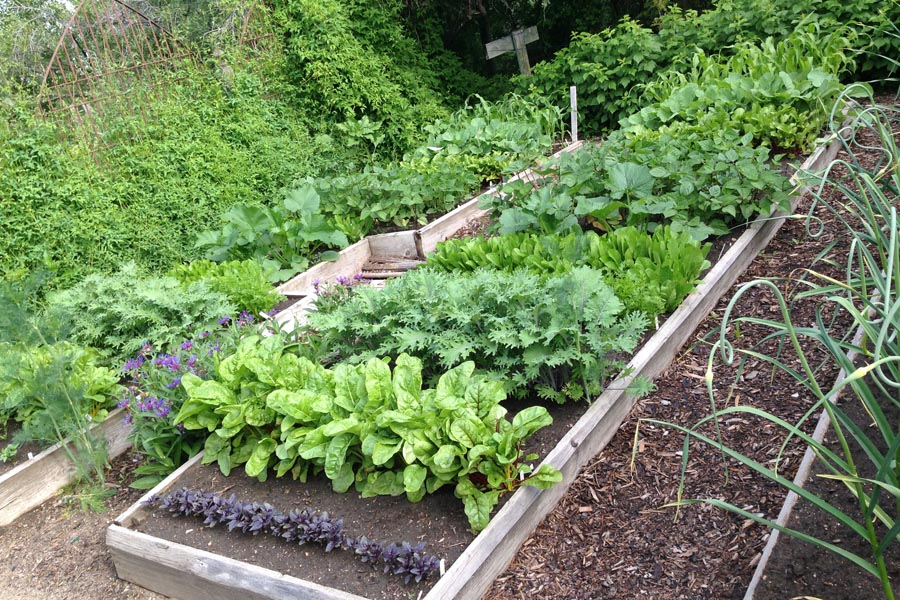
Herb Garden and Vegetable Patch
The Herb garden is located west of the chicken house and is one of the more manicured gardens. With sand pathways and rock bordered beds, it is very appealing to the eye. The Herb Garden contains many typical medicinal and herbal plants, as well as some ornamental perennials. Some of the plants include chamomile, hyssop, tarragon, feverfew, valerian and an asparagus patch. In the vegetable garden, we have 4 raised beds, two are reserved for garlic plantings and the other two for vegetables such as corn, carrots, beets, beans and potatoes. This garden is also a year-long spectacle, but definitely is at its prime in early summer.

Poppy Garden
The Poppy garden is an amazing sight to see. The garden contains three tiers of 13 beds filled with a variety of self-seeding field poppies, as well as a couple beds of oriental poppies. Throughout the garden is a pathway of field stones that were harvested from the nearby farmland. In its prime, usually between late June and early July, the garden is a solid lush of different tones of red, with splashes of pink and white. This garden was one of the first built on the property by Jim Coutts.
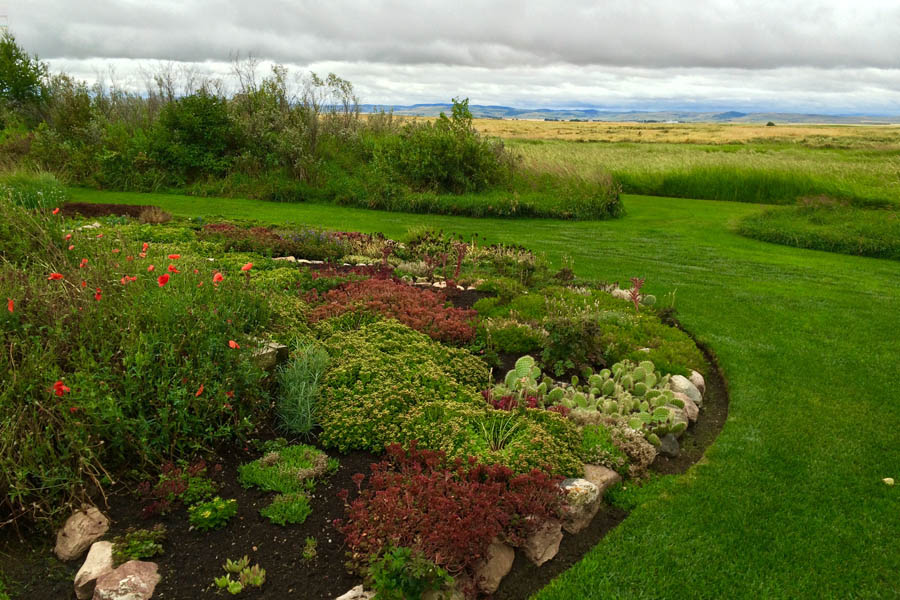
Medicine Wheel
The Medicine Wheel is located at the west end of the Poppy Garden, and was created as a representation of the Native Medicine Wheels found all over Western Canada. The one at the Centre is simply just a garden, but adds character to the base of the Poppy garden. The Medicine Wheel contains a variety of low growing sedums, creeping jenny, junipers, and a couple patches of prickly pear cactus. The prime time to see this garden would be in Late June when the cacti are blooming.
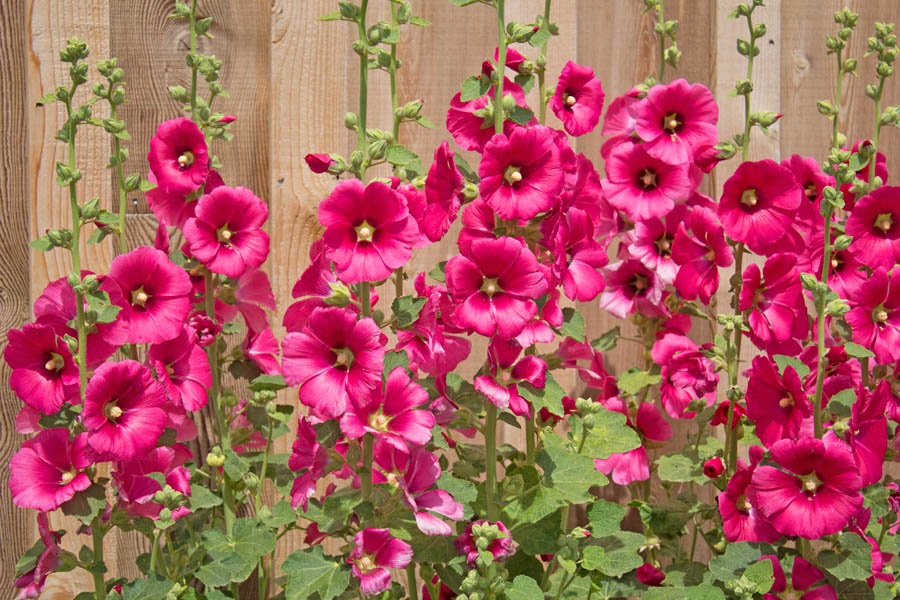
Holly Hock Bed
The Holly Hock garden is found along the west side of the main house. It is a solid bed of many different colors, and was an original planting recovered from when Jim’s grandmother lived on the property.
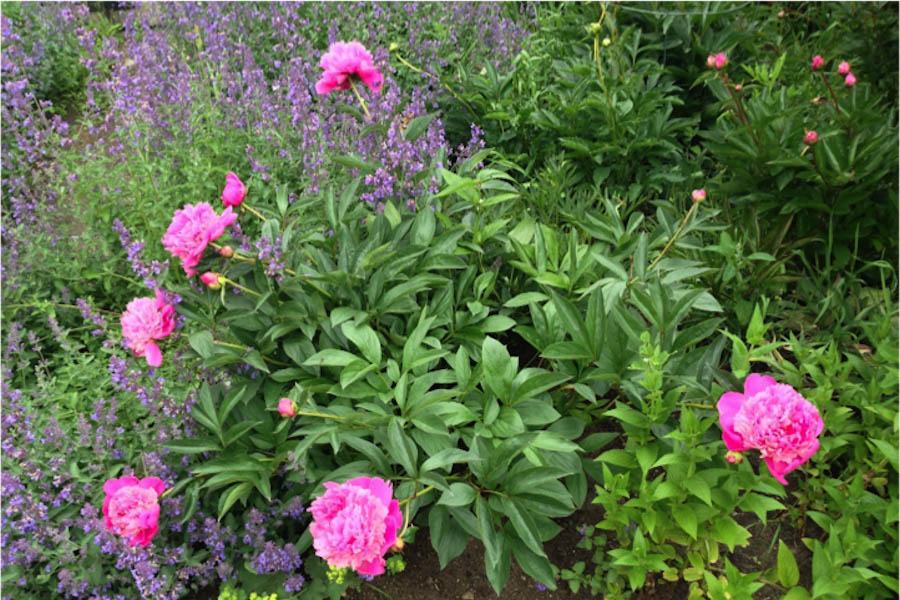
Peony Garden
The Peony garden is without a doubt our best spring garden. It contains a variety of tulips with different colors and textures popping out of a solid mass of grape hyacinth. Once the tulips are near finished, the peonies begin to bloom. Many other perennials call this garden home, including ostrich fern, martagon lilies, and lady’s mantle. The best time to see this garden would be in anytime in June..
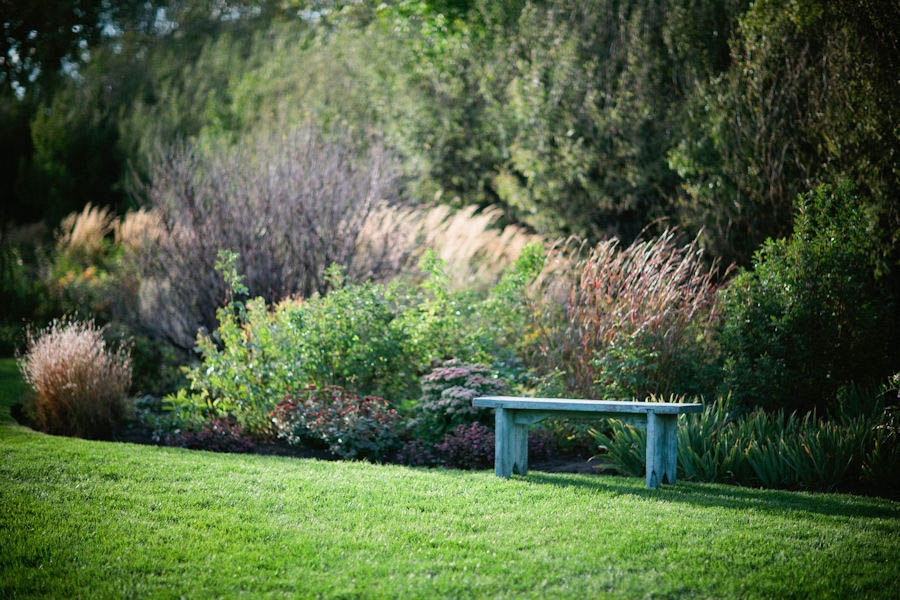
Bench Garden
Located to the south of the main house is the Bench garden. Bordered in by caragana, it contains old church pews surrounding a plot of Blue Grama grass that is edged by old railway ties from the Nanton train station. Along the side of the house is a bed of yarrow with many different colors. This garden is a great place to stop and relax.
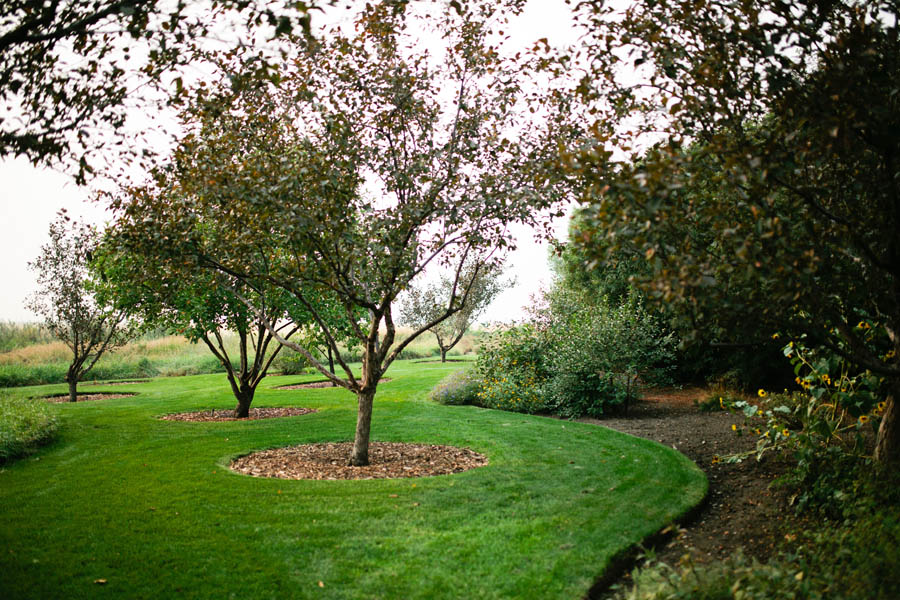
Native Border
The Native border is a garden that is constantly evolving through the years, It contains many native forbs and grasses, including Tall Lungwort and Sticky Alum Root. This garden runs along the perimeter of the bench garden and is bordered in by a lovely orchard of ornamental crabapple trees. This bed also contains a large stand of sunflowers that some might say greet you as you enter the property. This garden is best viewed in late spring – early summer, and again in late summer when the sunflowers are blooming.
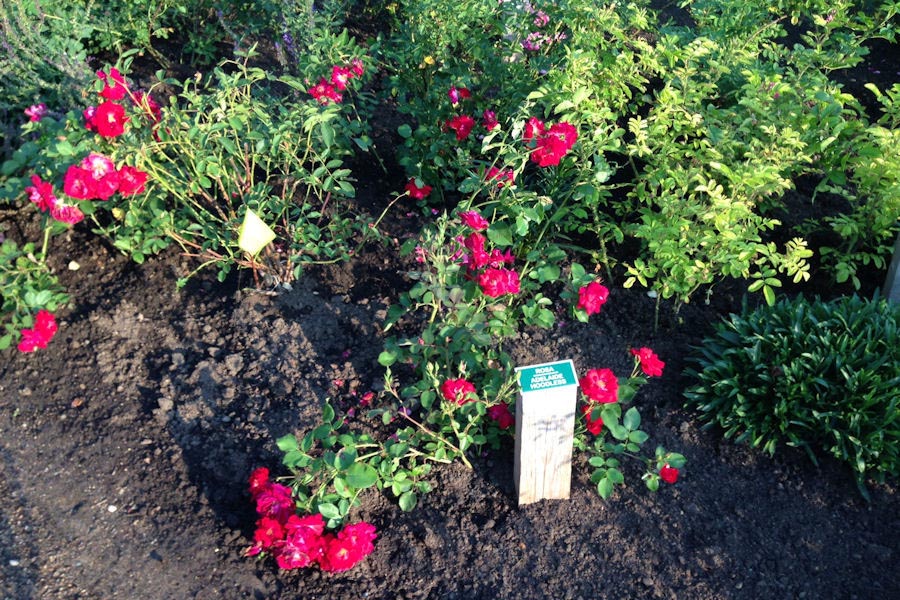
Rose Garden
One of the largest gardens on the property, the rose garden is filled with specimens from the explorer series, the parkland series and a couple from the pavement and Canadian artist series. The entire garden is bordered in the Alberta Wild Rose. Rosa acicularis. One large stand of Harrisons Yellow is the first to bloom in late spring, with the nearly the entire ground covered with Late Tulips. As the season progresses the rest of the garden begins to bloom. A couple plantings of May Night Salvia add a contrast of purple to the garden. Late July is the best time to see the Rose Garden showing off.

Lily Garden
The Lily garden is a smaller garden when compared to others on the property. It is tucked into the corner of the driveway, near the North Barn. The Siberian Irises are the first to start blooming in late spring. Throughout the season the Lily garden changes colors, going from orange, to reds and pinks, and then it finishes off in late august with a vibrant yellow. The garden is bordered in by a cotoneaster hedge, and in the center of the garden there is a small Ohio buckeye and a Nanking cherry. A couple other plants that can be found within this garden include, spotted lungwort, sticky purple geranium, alpine lady’s mantle, sea lungwort, prairie smoke and pasque flower. This garden is beautiful all summer long.
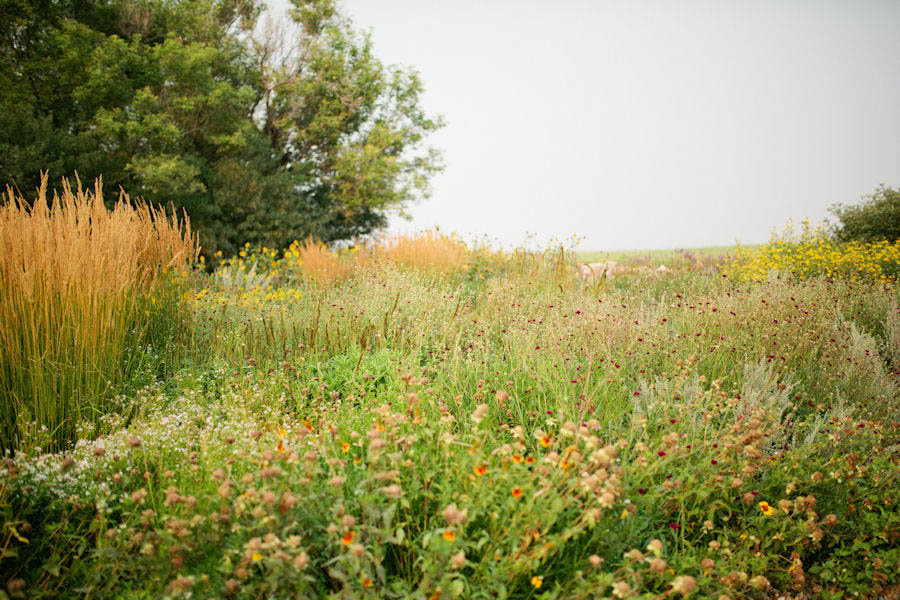
Late Garden
This is one of our tallest and latest blooming gardens. It is filled with many creeping perennials, such as Willow Aster, Nuttall’s Sunflower and Sage. This very large garden is interesting to watch throughout the season, slowly growing from being flush with the ground to taller than most of the gardeners. There is a single pathway that meanders through the garden into the caragana shelterbelt on the north side. From the pathway you can see a variety of plants including sedum, Egyptian walking onion, yucca and daylilies. From the front of the garden, it is a great representation of a tall meadow, riddled with many types of forbs. The name of the Late Garden was created due to the fact that it was the last garden to be in full bloom around the time that Jim left Alberta to go back to Ontario.
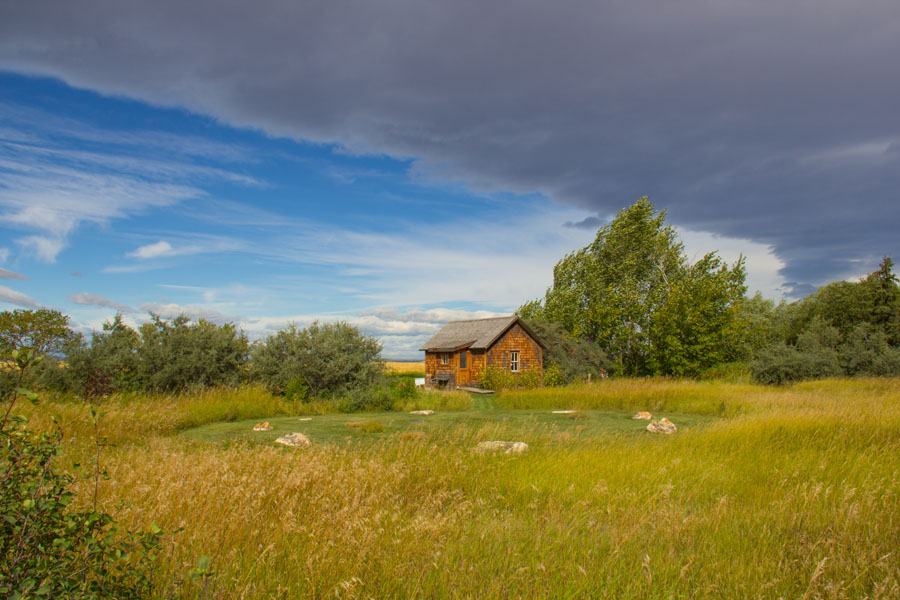
Sedge Circle
The sedges are planted within the stone circle. The Stone circle is a representation of the many others found all over the world, the most common known one being Stonehenge. There are 7 different species of native sedges growing in round plots between the stones; some species include, Norway Sedge, Low Sedge and Raymond’s Sedge.
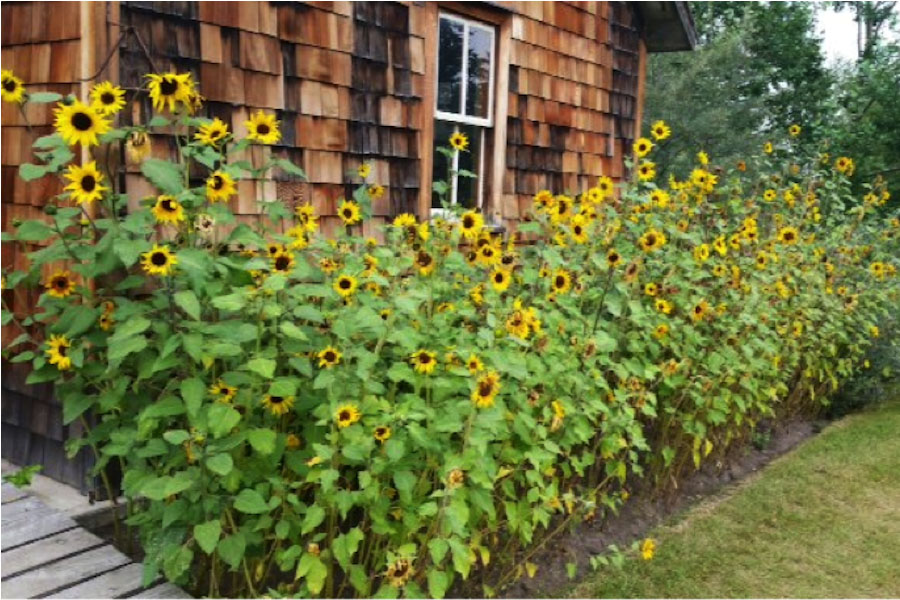
Sunflower Bed
The Sunflower bed is located on the east side of the Tapp House. This location protects the sunflowers from our strong southwest winds which could blow them over very easily in the fall season. This garden adds a lot of character to the Tapp House, and provides forage and seed for the American Gold Finches and other small birds. With the bed being right outside the window of the Tapp House you can watch the birds foraging right up close.
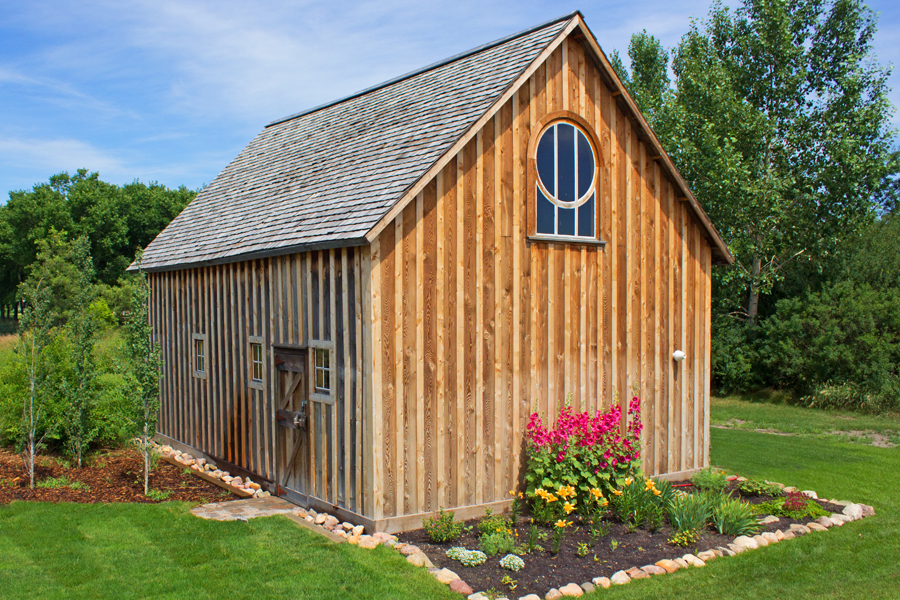
South Barn Bed
The South Barn Bed is another brand new addition to the Coutts Centre. Built in 2014, it was created from salvaged plants from another site. When these plants were brought in, there was no telling what color the blooms would be on the lilies, irises or holly hocks, we were pleasantly surprised in 2015 with an explosion of yellows and pinks. It is a very quaint little garden that adds a lot of color to the South Barn area.
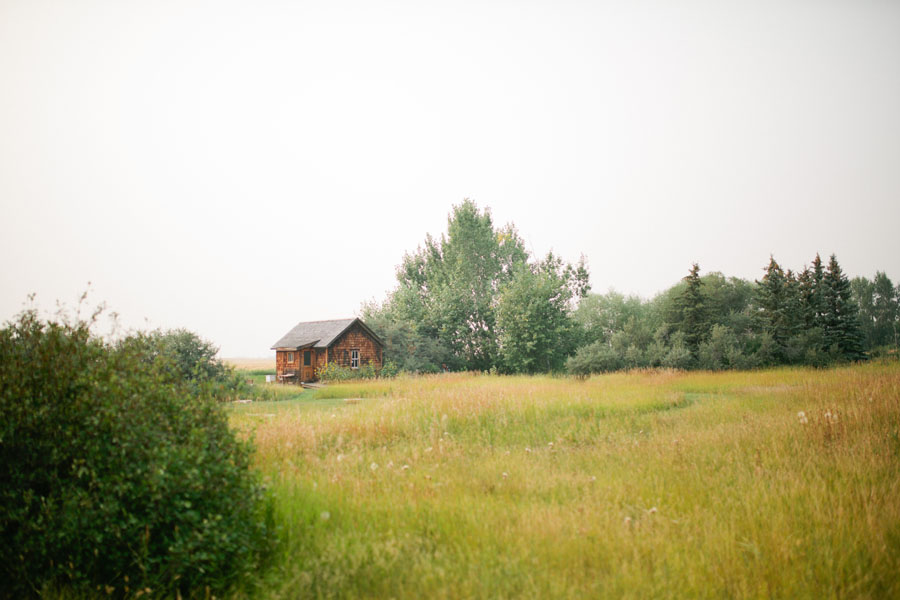
Meadows
There are multiple tall meadows throughout the property that add a wonderful contrast between the manicured areas and the wild areas. The meadows are meant to represent natural prairie meadows filled with grasses and different forbs. Jim was an advocate for prairie restoration and believed that these meadows could one day truly represent a healthy native stand.
